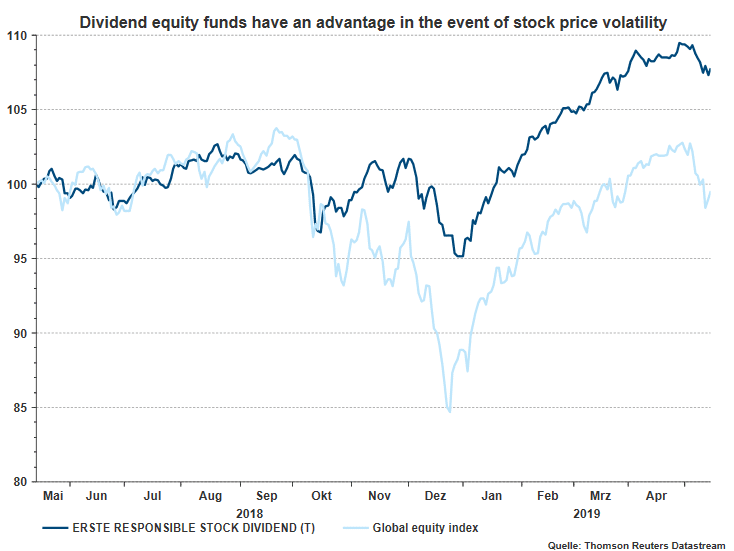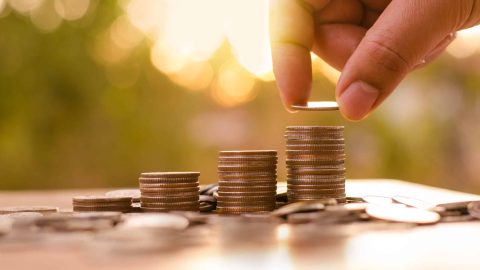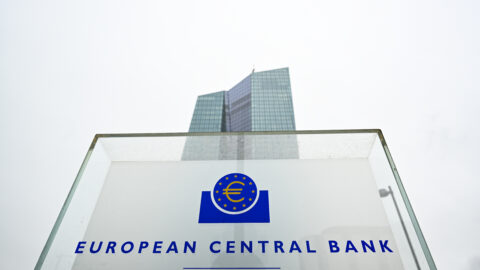Investors are happy about rising share prices on the stock exchange. But in addition to rising prices, there is another factor that makes listed companies an interesting investment, especially in an environment of low interest rates like the one we have been experiencing: the annual dividend that companies distribute to their shareholders.
Dividends make the portfolio more stable
In the quest for attractive shares, one should take into account dividends, given that interest rates have been low in comparison with the past. Statistics show that dividends can positively influence total return. Companies that can afford to pay out a dividend often have a high market capitalisation and have been on the stock exchange for a long time. Companies that pay out parts of their profits as dividends to their shareholders have a strong basis and the sort of earnings power that allows them to absorb setbacks during times when share prices are fluctuating more significantly.
Dividend-stocks shares are not a better form of bonds
Dividend shares can help investors offset the lack of interest income in their portfolios. However, they are not bonds. Bonds and shares are two different types of assets: a bond investor lends the government or a company money for a specified amount of time. In return, he or she receives regular interest payments, but does not participate in the profit or loss of the company. Buying shares in a company means to become (co-) owner; as a result, the investor participates in profits but may also have to accept losses during down times. Therefore, the price risk inherent to share ownership should not be underestimated.
What does a high dividend yield mean
The dividend yield is a ratio that measures the return accruing to the investor from the company’s profits. It is the ratio of dividend (per share) to share price, multiplied by 100.
Example

Companies distributing high dividend in 2019
According to analyst estimates, listed companies will, like last year, distribute high dividends in 2019. The dividend yield 2019 for the US index of the 500 biggest industrial companies (S&P 500) should average 2.2%. Estimates put the average for the Nikke index at 2.3%, and the dividend yield estimated for the companies in the Euro Stoxx index is 3.9% (sources: consensus estimates, Bloomberg). By comparison, the yield of a 10Y German government bond is currently negative; -0.123%, to be precise (source: Bloomberg; as of 15 May 2019).
It is worth keeping one’s eyes on the ratios
The dividend in absolute terms is not the only parameter one should keep an eye on, as a higher dividend may also mean that the share price has fallen. The important aspects in this context are for the dividend to be paid out regularly, reliably, and for it to increase in the long run. In addition, other ratios (e.g. earnings, cash flow, ROE) should also be taken into consideration. Just like with all investment strategies, it makes sense for dividend papers to diversify one’s investments and to set up one’s portfolio on a broad basis. If you do not have time or do not feel like analysing dozens or hundreds of companies, you could leave the selection of suitable dividend shares to the experts of investment companies.
“Double dividend“ with the ERSTE RESPONSIBLE STOCK DIVIDEND fund
To this end, we have created funds like ERSTE RESPONSIBLE STOCK DIVIDEND. In addition to the above-average dividend yield of 4.2%, the fund also offers another benefit: only those shares will be taken into the portfolio that pass the sustainability filter of Erste Asset Management. What does that mean?

Picture: Stratege Alexander Sikora-Sickl
“A team with numerous members examines the respective companies thoroughly as to whether they comply with the ESG criteria (environmental, social, governance) and are justifiable from an ethical point of view,” explains the strategist Alexander Sikora-Sickl.
Low-volatility strategy to minimise risk
Whereas a portfolio of globally listed shares had lost more than 13% by the end of last year, a well-managed dividend fund such as ERSTE RESPONSIBLE STOCK DIVIDEND only incurred a decline of about 6.5% (source: Bloomberg, Erste AM). This means it helped contain losses, and like the statistics illustrate, the fund then managed to gain almost as much as the broad market in the subsequent upswing. This success is based on an investment strategy that has low volatility at its core (i.e. low share price fluctuations). The portfolio strategist Sickl therefore pays particular attention to the fundamental quality of the companies he scrutinises. The EBIT margin of the companies in the portfolio is 33%, free cash flow is 4.6% (source: Erste AM, own data, March 2019).

In phases where stock market prices are more volatil, such as at the end of 2018, for example, a dividend strategy is in advantage, see the chart. If the stock markets are going to have an longer period only climbing up, the dividend strategy will be less price-relevant. Note: Past performance is not a reliable indicator of future performance. Note: Due to the short maturity, the performance has little meaning. Past performance does not allow reliable conclusions to be drawn about future developments.
The portfolio of ERSTE RESPONSIBLE STOCK DIVIDEND currently consists of a broad mix of regions and sectors: we have recently stepped up the purchase of shares from Australia, Canada, and Germany as well as of companies with strong dividends from the utility, industrial, and financial sectors.
Summary
The dividend is an important component of the total return of a share. To select attractive dividend titles requires a close look at the financial strength of the company. Be careful: a high dividend yield is not always a purchase argument for a share. This is the case when the stock has already fallen in price due to unfavorable business performance, but the expectations for the upcoming dividend have not yet been adjusted. A dividend strategy suggests that price volatility for high-dividend companies is lower than for companies that pay little or no dividends. Anyone who wants to invest in equities, but does not want to accept the entire fluctuation risk of a stock exchange, is in good hands with high-dividend equities and funds.
Legal note:
Prognoses are no reliable indicator for future performance.
Legal disclaimer
This document is an advertisement. Unless indicated otherwise, source: Erste Asset Management GmbH. The language of communication of the sales offices is German and the languages of communication of the Management Company also include English.
The prospectus for UCITS funds (including any amendments) is prepared and published in accordance with the provisions of the InvFG 2011 as amended. Information for Investors pursuant to § 21 AIFMG is prepared for the alternative investment funds (AIF) administered by Erste Asset Management GmbH pursuant to the provisions of the AIFMG in conjunction with the InvFG 2011.
The currently valid versions of the prospectus, the Information for Investors pursuant to § 21 AIFMG, and the key information document can be found on the website www.erste-am.com under “Mandatory publications” and can be obtained free of charge by interested investors at the offices of the Management Company and at the offices of the depositary bank. The exact date of the most recent publication of the prospectus, the languages in which the fund prospectus or the Information for Investors pursuant to Art 21 AIFMG and the key information document are available, and any other locations where the documents can be obtained are indicated on the website www.erste-am.com. A summary of the investor rights is available in German and English on the website www.erste-am.com/investor-rights and can also be obtained from the Management Company.
The Management Company can decide to suspend the provisions it has taken for the sale of unit certificates in other countries in accordance with the regulatory requirements.
Note: You are about to purchase a product that may be difficult to understand. We recommend that you read the indicated fund documents before making an investment decision. In addition to the locations listed above, you can obtain these documents free of charge at the offices of the referring Sparkassen bank and the offices of Erste Bank der oesterreichischen Sparkassen AG. You can also access these documents electronically at www.erste-am.com.
Our analyses and conclusions are general in nature and do not take into account the individual characteristics of our investors in terms of earnings, taxation, experience and knowledge, investment objective, financial position, capacity for loss, and risk tolerance. Past performance is not a reliable indicator of the future performance of a fund.
Please note: Investments in securities entail risks in addition to the opportunities presented here. The value of units and their earnings can rise and fall. Changes in exchange rates can also have a positive or negative effect on the value of an investment. For this reason, you may receive less than your originally invested amount when you redeem your units. Persons who are interested in purchasing units in investment funds are advised to read the current fund prospectus(es) and the Information for Investors pursuant to § 21 AIFMG, especially the risk notices they contain, before making an investment decision. If the fund currency is different than the investor’s home currency, changes in the relevant exchange rate can positively or negatively influence the value of the investment and the amount of the costs associated with the fund in the home currency.
We are not permitted to directly or indirectly offer, sell, transfer, or deliver this financial product to natural or legal persons whose place of residence or domicile is located in a country where this is legally prohibited. In this case, we may not provide any product information, either.
Please consult the corresponding information in the fund prospectus and the Information for Investors pursuant to § 21 AIFMG for restrictions on the sale of the fund to American or Russian citizens.
It is expressly noted that this communication does not provide any investment recommendations, but only expresses our current market assessment. Thus, this communication is not a substitute for investment advice.
This document does not represent a sales activity of the Management Company and therefore may not be construed as an offer for the purchase or sale of financial or investment instruments.
Erste Asset Management GmbH is affiliated with the Erste Bank and austrian Sparkassen banks.
Please also read the “Information about us and our securities services” published by your bank.


